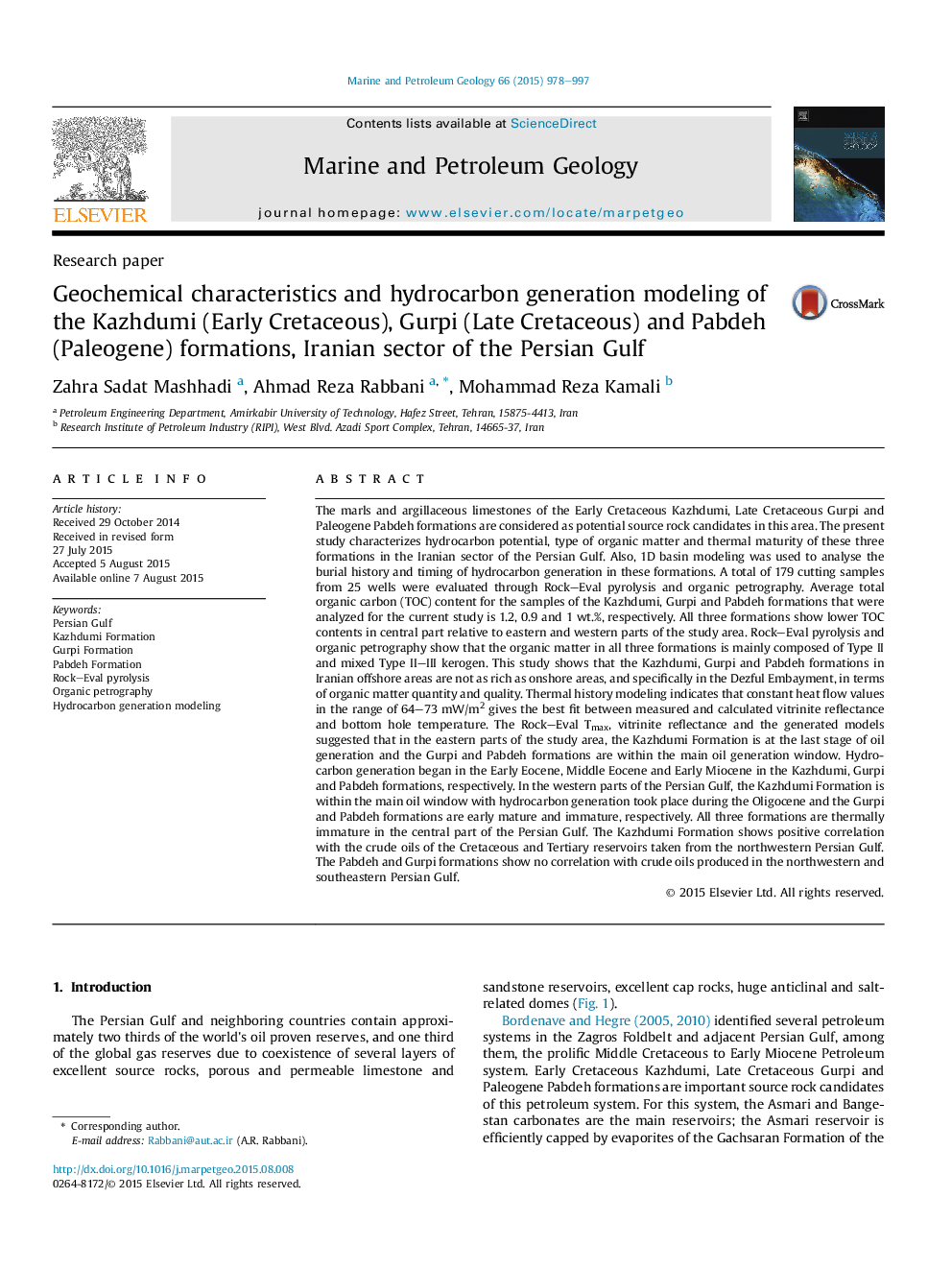| Article ID | Journal | Published Year | Pages | File Type |
|---|---|---|---|---|
| 4695503 | Marine and Petroleum Geology | 2015 | 20 Pages |
•The Pabdeh, Gurpi and Kazhdumi formations have poor to fair generation potential.•These formations are immature in the central Persian Gulf.•These three formations entered the oil window in the eastern Persian Gulf.•The Pabdeh Formation is immature in the western Persian Gulf.•The Gurpi and Kazhdumi formations entered oil window in the western Persian Gulf.
The marls and argillaceous limestones of the Early Cretaceous Kazhdumi, Late Cretaceous Gurpi and Paleogene Pabdeh formations are considered as potential source rock candidates in this area. The present study characterizes hydrocarbon potential, type of organic matter and thermal maturity of these three formations in the Iranian sector of the Persian Gulf. Also, 1D basin modeling was used to analyse the burial history and timing of hydrocarbon generation in these formations. A total of 179 cutting samples from 25 wells were evaluated through Rock–Eval pyrolysis and organic petrography. Average total organic carbon (TOC) content for the samples of the Kazhdumi, Gurpi and Pabdeh formations that were analyzed for the current study is 1.2, 0.9 and 1 wt.%, respectively. All three formations show lower TOC contents in central part relative to eastern and western parts of the study area. Rock–Eval pyrolysis and organic petrography show that the organic matter in all three formations is mainly composed of Type II and mixed Type II–III kerogen. This study shows that the Kazhdumi, Gurpi and Pabdeh formations in Iranian offshore areas are not as rich as onshore areas, and specifically in the Dezful Embayment, in terms of organic matter quantity and quality. Thermal history modeling indicates that constant heat flow values in the range of 64–73 mW/m2 gives the best fit between measured and calculated vitrinite reflectance and bottom hole temperature. The Rock–Eval Tmax, vitrinite reflectance and the generated models suggested that in the eastern parts of the study area, the Kazhdumi Formation is at the last stage of oil generation and the Gurpi and Pabdeh formations are within the main oil generation window. Hydrocarbon generation began in the Early Eocene, Middle Eocene and Early Miocene in the Kazhdumi, Gurpi and Pabdeh formations, respectively. In the western parts of the Persian Gulf, the Kazhdumi Formation is within the main oil window with hydrocarbon generation took place during the Oligocene and the Gurpi and Pabdeh formations are early mature and immature, respectively. All three formations are thermally immature in the central part of the Persian Gulf. The Kazhdumi Formation shows positive correlation with the crude oils of the Cretaceous and Tertiary reservoirs taken from the northwestern Persian Gulf. The Pabdeh and Gurpi formations show no correlation with crude oils produced in the northwestern and southeastern Persian Gulf.
